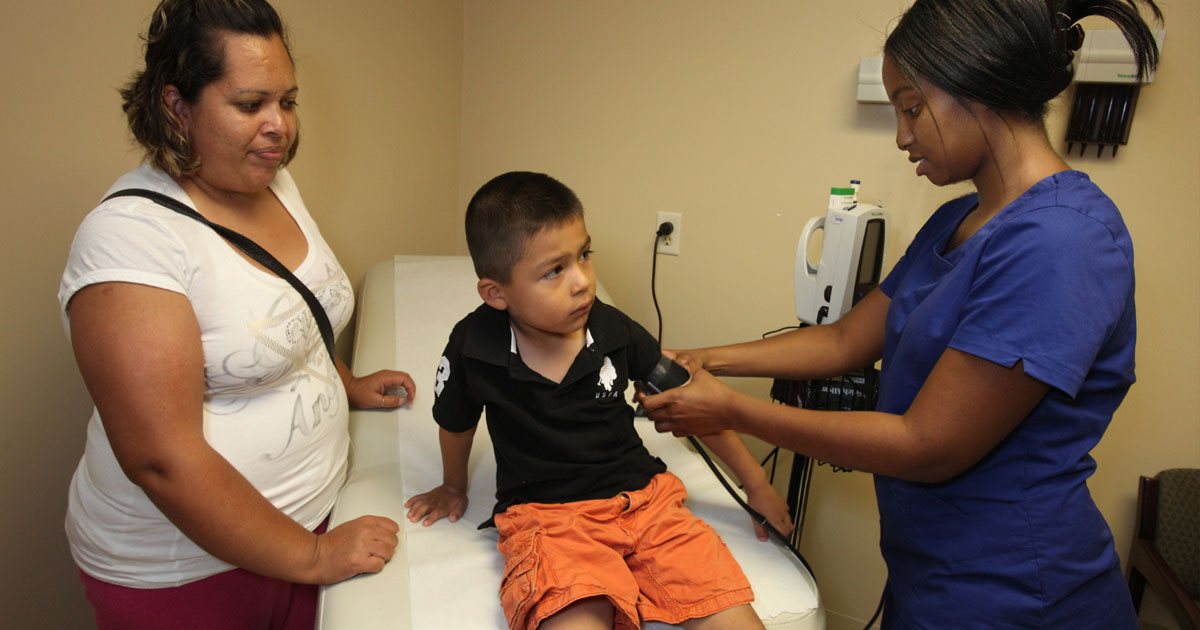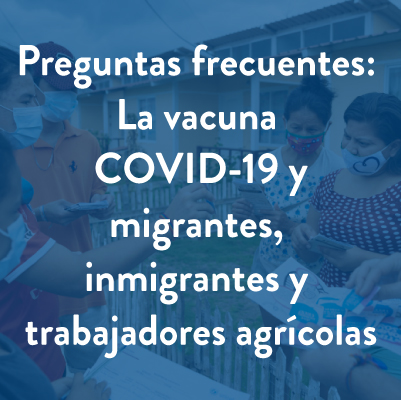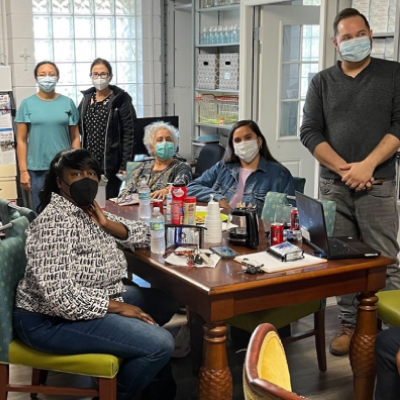- Who We Are
- Clinician Employment
- Publications
- Witness to Witness (W2W)
- El Premio Kugel & Zuroweste a la Justicia en la Salud
- Your Voice Matters: Photovoice Project
Thu, 09/07/2017 | by Farmworker Justice


Photograph: Earl Dotter
Editor’s Note: How do immigration policy changes -- or even the tone of the national conversation around immigration -- affect health care needs and access for people who lack authorization to live and work in the US? With this week’s decision against DACA, we turn to Farmworker Justice to provide this useful overview and perspective. Visit Farmworker Justice’s blog to read regular updates on immigration policy as it relates to agricultural workers.
By Iris Figueroa, JD, Staff Attorney, Farmworker Justice
Right now, hundreds of thousands of immigrants who have temporary status are in a state of fear and anxiety. Earlier this week, the Trump Administration ended the Deferred Action for Childhood Arrivals (DACA) program, affecting nearly 800,000 so-called “Dreamers,” who will lack legal status without the program. Many Dreamers are left in a state of uncertainty, wondering whether they will be deported, what will happen to their families, and whether they can go to the doctor when they get sick.
Many immigrants across the country -- DACA recipients, anyone who lacks authorization to live and work in the US, and US citizens and legal residents living in mixed status households -- are on edge. Some of the worst fears about the anti-immigrant rhetoric during the presidential campaign have unfortunately become reality through a series of immigration policy changes and proposals aimed at increasing immigration enforcement and reducing immigration overall. This has led to tangible impacts on immigrants’ behavioral health due to increased stress related to discrimination and fear of deportation and/or family separation, as well as on immigrants’ access to health care services by deterring eligible family members from applying for benefits (including health insurance, WIC, and SNAP) and accessing preventative health services. Health clinics and other organizations that serve immigrants and their families are similarly concerned about the impact of immigration enforcement on the communities they serve, as well as on their own organizations.
One clinician told MCN, “Just this past week, a woman shared that each morning she looks outside to be sure no one is there before she goes to work, and she is afraid to come to the clinic. We are seeing a much higher level of anxiety and depression, [and] descriptions of nightmares.” Clinicians across the country have similar stories from their reluctant patients. Given this new reality, it is more important than ever for health care providers to be mindful and proactive about how to best serve their patients and help to keep their communities healthy and safe.
What has changed in immigration policy?
Among various recent changes in immigration policy - in addition to the DACA decision - two of the most significant are the broadening of enforcement priorities and a push for local law enforcement to cooperate with or even participate in immigration enforcement actions. Under policy guidance issued by the previous Administration, immigration enforcement priorities were limited to certain groups of individuals, including recent entrants and those with criminal convictions. In contrast, current immigration enforcement priorities now encompass a broad category of people, including those who have violated immigration laws but have no criminal record and have been in the country for a significant amount of time, and recent ICE statistics have shown a significant increase in the arrest and removal of immigrants with no criminal history. The current Administration is also pushing for greater cooperation from local law enforcement, including programs which allow local law enforcement to take on the role of immigration enforcement. Similarly, the Administration has vowed to combat “sanctuary jurisdictions” that choose not to use their resources for immigration enforcement. The effects of this policy shift are already being felt and there have been various reports of immigrants being unwilling to report crimes, testify in court, or otherwise become involved with judicial proceedings or government agencies.
Another immigration policy shift causing a lot of uncertainty are rollbacks to existing legal immigration programs. These aren’t limited to DACA; Temporary Protected Status (TPS) for Haitians is set to expire in January 2018, and TPS holders from other countries fear they could also lose their status soon. Beyond these shifts in immigration policy, developments in other key policies, such as the possible repeal or weakening of provisions of the Affordable Care Act, may also have significant impacts on immigrants’ ability and willingness to access health insurance and needed social services.

Due to recent immigration policy, immigrant patients may be particularly sensitive to interacting with individuals who appear to be acting in an “official” capacity. Photograph: Earl Dotter.
How can health centers and health care providers better serve immigrant populations?
Given the current context summarized above, many immigrants are uncertain about their future and fearful of coming into contact with immigration authorities. There are three main ways that health centers can help to ensure better access to services and improved health outcomes for immigrant patients: 1) clarify their role and purpose; 2) adapt health center services to minimize the distance and frequency of travel for patients; and 3) develop organizational plans to prepare for and respond to potential immigration enforcement.
A crucial first step for serving immigrant patients is making sure that the practitioner’s role and purpose is clear, including whether they work for a particular organization and what services the organization provides. Immigrant patients may be particularly sensitive to interacting with individuals who appear to be acting in an “official” capacity, especially if personal information may be exchanged. A patient’s immigration status is irrelevant to a health center’s treatment of his or her medical needs. It is important to communicate this to patients, as well as clarify whether there is a need for any personal information, what the information will be used for and whether it will remain confidential. This should be done in a linguistically and culturally appropriate way.
A second important step is to ensure flexibility in the provision of services. Many health centers who serve immigrant communities already implement programs, such as mobile clinics, home visits by outreach workers, and use of information technology, that reduce the need for workers to drive or be driven to a specific clinic location to access services. Additionally, providers should be mindful of the need for testing, follow-up appointments, and/or medications and try to maximize the services rendered during an appointment. Finally, health centers and providers should think through how to address a possible increase in need for mental health services, particularly for children.
Health centers should also consider developing an organizational plan to prepare for and respond to increased immigration enforcement. Medical facilities are considered “sensitive locations” - special sites in which immigration agents must exercise caution and avoid enforcement actions unless there are exigent circumstances. The sensitive locations policy was established during the previous Administration and remains in place, yet it is only internal guidance and not legally binding. Though immigration enforcement at or near a health care center is unlikely, it is nevertheless a possibility. It is also important to note that immigration enforcement may vary from state to state. This is why it is so important to retain a local attorney who is familiar with immigration laws in your area. Some other components of the organizational plan should include establishing and disseminating clear safety and access policies that distinguish between public and private areas, designating a staff member or members to act as the contact person who will coordinate the center’s response and ensuring that those authorized individuals receive training on what to do and who to contact if law enforcement or immigration agents enter the facility.
It is also important to partner with community organizations and stay informed about local developments regarding immigration policy and work with local leaders, law enforcement, and policy makers to educate them about the importance of patient access to health centers. Health centers should promote access by working with community members to ensure the health center is a welcoming and safe place for all workers and families, regardless of their immigration status.
Available Resources:
Like what you see? Amplify our collective voice with a contribution.
Got some good news to share? Send it to us via email, on Facebook, or on Twitter.
Return to the main blog page or sign up for blog updates here.







